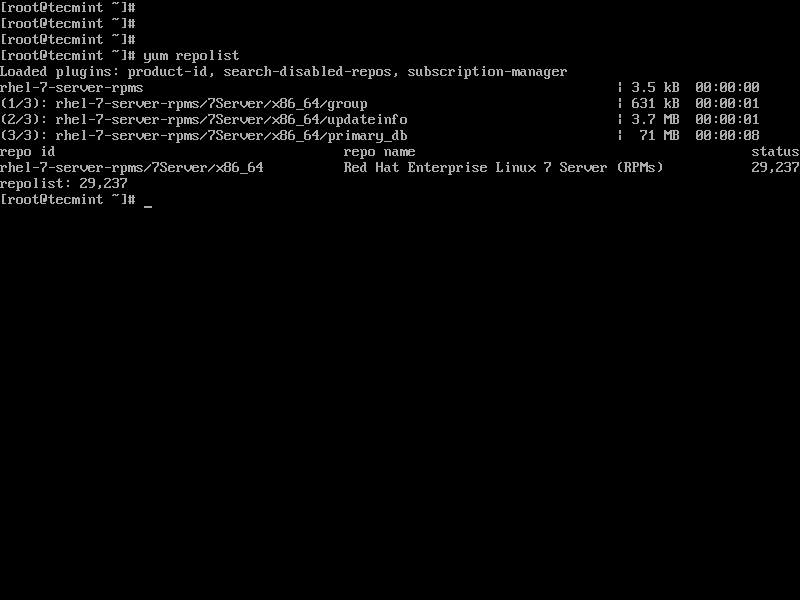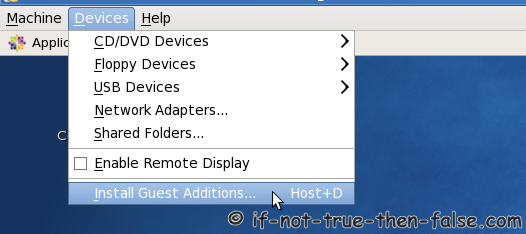//Pre-requisites
G D, if you just need the iso file to load/reload a system. If you're upgrading an existing system to RHEL 7.6, see Christian's post above. Aug 12, 2021 OS need to be registered with Redhat subscription. Rhel 6.10, Rhel 7.6 iso images. Complete backup to the server first. Make sure the current running OS version is latest on their serious for 6 it should be 6.10. # yum update // here it will upgrade the subversion if not latest.
Complete backup has to done before.
OS need to be registered with Redhat subscription.
Rhel 6.10, Rhel 7.6 iso images.
//Steps
complete backup to the server first
make sure the current running OS version is latest on their serious for 6 it should be 6.10.
# yum update // here it will upgrade the subversion if not latest.
# reboot
# cat /etc/redhat-release //check twice with this yum update -y make sure all package are up-to-date
Need to install pre-upgrade assistant tool and enable extra repository
# subscription-manager repos --enable rhel-6-server-extras-rpms
# yum install preupgrade-assistant preupgrade-assistant-el6toel7
# preupg -v //run this tool
// this output will be saved in /root/preupgrade/result.html we can check their upgrade status
// then install upgrade tool
# yum install redhat-upgrade-tool
// now disable all the current active repositories
# yum -y install yum-utils && yum-config-manager --disable *
// now execute the upgrade process during the upgrade it requires redhat linux 7 packges, we should need to locally mount the ISO image. please refer the post on this same blog for how to mount the image locally.
# redhat-upgrade-tool --network 7.6 --instrepo //mnt/rhel7iso

# redhat-upgrade-tool --device device_path
// if we don't specify the device path redhat upgrade tool scans all mounted removable location on server
# redhat-upgrade-tool --iso //mnt/rhel7iso

# redhat-upgrade-tool --cleanup-post
# reboot
# rpm -qa | grep .el6 &> /tmp/el6.txt
# rpm -e $(cat /tmp/el6.txt) --nodeps

# yum update //you will get latest package of rhel 7
# reboot
# cat /etc/redhat-release
# yum repolist
//if facing any issue on repolist, need to unsubscribe or clean or resubscription would solve the issue.

# subscription-manager remove --all
# subscription-manager clean
# subscription-manager refresh
# subscription-manager unregister
# subscription-manager register
//Pre-requisites
Complete backup has to done before.
OS need to be registered with Redhat subscription.
Rhel 6.10, Rhel 7.6 iso images.
//Steps
complete backup to the server first
make sure the current running OS version is latest on their serious for 6 it should be 6.10.
# yum update // here it will upgrade the subversion if not latest.
# reboot
# cat /etc/redhat-release //check twice with this yum update -y make sure all package are up-to-date
Need to install pre-upgrade assistant tool and enable extra repository
# subscription-manager repos --enable rhel-6-server-extras-rpms
# yum install preupgrade-assistant preupgrade-assistant-el6toel7
# preupg -v //run this tool
// this output will be saved in /root/preupgrade/result.html we can check their upgrade status
// then install upgrade tool
# yum install redhat-upgrade-tool
// now disable all the current active repositories
# yum -y install yum-utils && yum-config-manager --disable *
// now execute the upgrade process during the upgrade it requires redhat linux 7 packges, we should need to locally mount the ISO image. please refer the post on this same blog for how to mount the image locally.
# redhat-upgrade-tool --network 7.6 --instrepo //mnt/rhel7iso
# redhat-upgrade-tool --device device_path
// if we don't specify the device path redhat upgrade tool scans all mounted removable location on server
# redhat-upgrade-tool --iso //mnt/rhel7iso
# redhat-upgrade-tool --cleanup-post
# reboot
# rpm -qa | grep .el6 &> /tmp/el6.txt
# rpm -e $(cat /tmp/el6.txt) --nodeps
# yum update //you will get latest package of rhel 7
# reboot
# cat /etc/redhat-release
# yum repolist
//if facing any issue on repolist, need to unsubscribe or clean or resubscription would solve the issue.
# subscription-manager remove --all
# subscription-manager clean
# subscription-manager refresh
# subscription-manager unregister
# subscription-manager register



